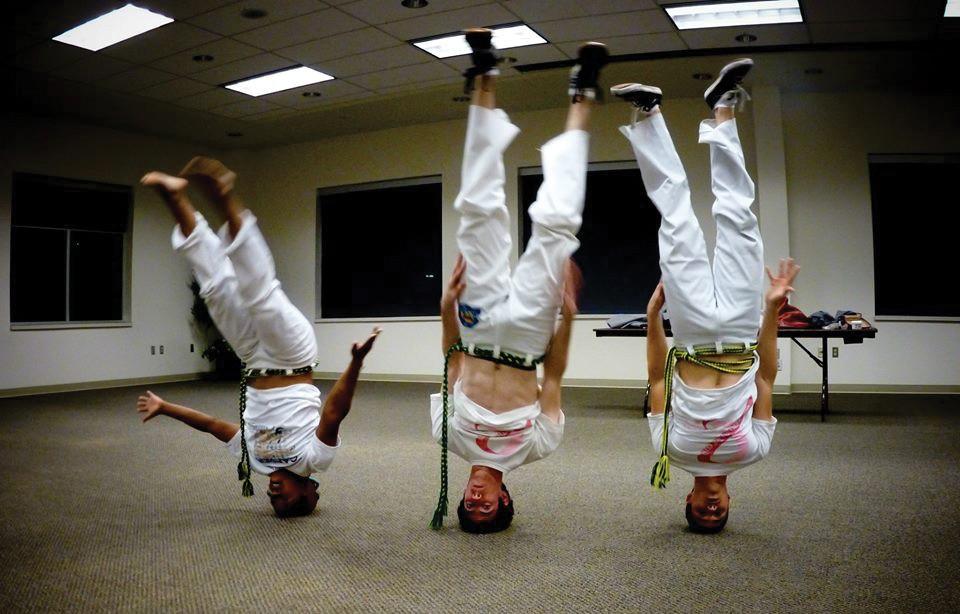Capoeira gives students a chance to play the chess of martial arts

Courtesy / GVSU Capoeira Mandinga Club Capoeira Mandinga Club
Dec 2, 2013
Disguised as a dance by African slaves who arrived in Brazil between the 16th and 19th centuries, the Brazilian martial art Capoeira was developed as a fighting technique that slaves could use to practice defense skills in plain sight.
“Unlike most other martial arts, Capoeira is not old and has its own philosophy,” said Joe Bielecki, president of the Capoeira Mandinga Club at Grand Valley State University.
The sport, which is the only completely Western martial art, combines cardio with mental awareness, is meant to prepare students in both strategy and athleticism.
“The biggest difference between Capoeira and other martial arts is its goal,” Bielecki said. “Eastern (martial arts are) more direct, like how to strike your opponent in the best possible way. But in Capoeira the goal is to turn your opponent’s strength against them.”
This is why Capoeira is often referred to as the “chess” of martial arts, because it requires training in strategy, such as knowing when to and when not to fight.
“Since it was invented by slaves, there were many times when you may have been faced with multiple opponents and the goal then would (be) just to get away,” Bielecki said.
Bielecki said the discipline teaches flexibility and agility rather than just depending upon strength to win a fight. Capoeira combines elements of dance, acrobatics and music.
“As soon as you run and someone chases you, then you have the advantage, because your opponents have to follow in your footsteps, which make them easier to outsmart,” Bielecki said. “This is why we focus more on cardio rather than weights, and (it) makes it easier for anyone to pick it up.”
GVSU’s Capoeira Club fights in the Mandinga style, similar to how kung-fu is a subset of Chinese martial arts. Designed to be practiced in the open, the martial art was disguised as dance and so infuses Mandinga with elements of dance and music.
“This is big because it was with music that Mandinga was practiced,” Bielecki said. “During our sessions, everyone gathers to practice, but since it seems so informal, we don’t call it sparring, we call it play.”
The music most often heard during Capoeira is played by drums and a traditional African string instrument called the berimbau. While students are not required to learn to play these instruments, members learn to sing along.
“Another draw is the music,” Bielecki said. “There are a lot of simple call and response songs that help with practice.”
In the past, the club has garnered its following by demonstrating for GVSU physical education classes and recruiting members from dorms and other venues. In the future, the club will be offering workshops with experts from as far away as Brazil to perform and generate further interest.
Along with performances, the club also makes a yearly trip to New York City for the annual Eat, Sleep, Capoeira event for experienced members, and it makes several smaller trips to events across the Midwest that are available for interested students.
The club meets in the Fieldhouse Arena every Tuesday and Thursday at 8:15 p.m. in Room 30 and every Sunday at the same time in the dance studio. For more information, e-mail Joe Bielecki at [email protected].

























